One of the sweetest greenhouse varieties is the Alexander the Great tomato
We know who Alexander the Great is from childhood. We have all read about the exploits of this great commander. Hundreds of years later, not only cities and streets are named after him, but also varieties of tomatoes. How did the tomato Alexander the Great deserve such a name? Read about this, as well as about the rules for growing the variety in our article.
The content of the article
Description of the variety
A mid-season and tasty tomato is recommended for growing in greenhouses... The variety loves fertile soil and fertilizers, does not tolerate drought and heat. The ripening period is about 110 days, the tomatoes ripen together.
Alexander the Great is a hybrid, it turned out as a result of crossing other varieties. The vegetable has a good immunity to diseases and insect pests.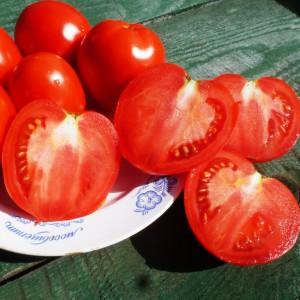
Distinctive features
The bushes of the plant are tall, the average height is about 2 m. In the process of leaving, the stems are tied to supports, as heavy vegetables pull the bushes down to the ground.
Lush foliage, dark green color. For the best yield, the stems are shaped. In the south of the country, the Alexander the Great variety is also grown in the open field.
Characteristics of tomatoes, productivity
Tomatoes are dense, round shape. When ripe, they have a deep red color. On average, one weighs about 250 g, with proper care and fertile soil, it can reach 0.5 kg.
The skin is firm, so tomatoes are not prone to cracking. The pulp is fleshy, with a lot of useful trace elements and vitamins.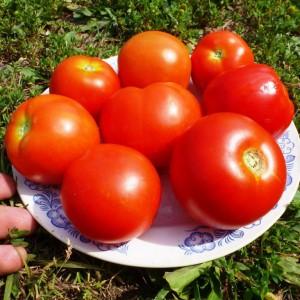
In the presence of watering and regular feeding, gardeners remove about 5.5-6 kg of ripe tomatoes from 1 bush.
How to grow seedlings
Seedlings are prepared 60-65 days before planting in the garden. The seeds are purchased at the store. When buying, carefully read the information about the manufacturer. Trust only trusted suppliers with a good reputation.
Seed preparation
Before planting, it is necessary to inspect the seeds for external deviations. If everything is in order, proceed to tempering them. This procedure will improve the immunity of the future plant to abrupt changes in climatic conditions. This is especially true for those who plant the variety in the open field.
To harden, place the seeds in the freezer for 10 hours, then remove and leave in the room for a day. Repeat these steps 3-4 times and you can be sure that Alexander the Great will not be "afraid" of frosts and strong winds.
Then start germinating the seed. With it, you will find out the percentage of seed germination and get fast germination. If the seeds are of poor quality, you will have the opportunity to change them, thereby avoiding future failure. It is better to use settled water for germination. Never germinate seeds in cold tap water.
The seeds are soaked in water, and then a slightly damp cloth is placed between them. Change the water several times a day. It is important not to allow drying out or waterlogging. The fabric is placed in a plastic bag or on wet cotton wool. It will protect the material from drying out.
Important! To stimulate growth, special preparations are added to the water. For example, "Zircon" or "Biohumus". The funds will not only speed up the appearance of the first shoots, but also protect the plant from negative factors. From folk remedies, use aloe juice or wood ash.
Capacity and soil
Experienced gardeners recommend planting seedlings in plastic cassettes. They are small containers held together with drainage holes. They come in different lengths and widths, so it is easy to choose a cassette just for your windowsill.
Cassettes are easy to use, inexpensive and long lasting. They are lightweight and when planting seedlings in the ground, you can easily get seedlings from cassettes. Of the minuses, it is noted that in most stores they are sold without pallets - you will have to make them yourself.
For seedlings, use their own soil or land from the store. To prepare the soil yourself, you will need:
- land from the garden;
- peat;
- humus;
- wood ash;
- eggshell.
Remember that the soil must be balanced and nutritious. In addition, only loose and light earth is suitable for seedlings - this way the plant will receive the right amount of oxygen. The soil must absorb moisture well and retain it. Its microflora is also important. Under no circumstances should there be weeds or debris, larvae or insects in the ground.
Landing
Prepared soil is poured into clean and dry containers. Then they make holes in it and put a seed in each. Sprinkle a little earth on top and slap. Do not forget to water the seedlings with warm, settled water.
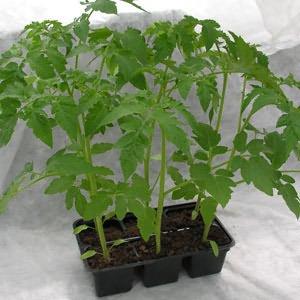
Immediately after sowing, write the name of the crop and the date on a plastic cassette. Marking will help you not to forget the name of the variety, as well as track how certain seedlings behave.
Growing and care
An important condition for growing seedlings is full lighting. Ideally, the plant should be in sunlight for about 14 hours a day..
If daylight hours are shorter in your area, use additional lighting with lamps. Remember to periodically turn over the seedling cassettes so that all the seedlings are evenly lit.
Avoid waterlogging the seedlings. It is best to water it with a spray bottle every 7-10 days. It is better to water adult seedlings from a pallet - this way the root system will gain strength faster. In this case, the air temperature should be at least 20 degrees.
Important! The containers must have good drainage. Excess or lack of moisture can destroy a young plant. Also, loosen the soil periodically. Solid ground slows down the flow of oxygen to the sprouts.
Seedlings are fed in the early morning on a cool day. The first feeding coincides with the appearance of the first shoots. Use preparations containing nitrogen, phosphorus and potassium. The most popular products are urea, nitroammofosk, ammonium sulfate. They promote protein formation and chlorophyll production. For seedlings, fertilizing in liquid form has the greatest effect.
How to grow tomatoes
For planting seedlings, you need to prepare the beds. In autumn, they are dug up, garbage and weeds are burned. In the spring, fertilize with a mixture of manure and leaves.
Landing
Choose a calm and cloudy day for planting. Temper the seedlings 1 week before planting. To do this, take her out to the balcony every night, increasing her stay outdoors every day. It is advised to place the bushes at a distance of 40-50 cm from each other.
Then pour in plenty of warm water. Try to keep moisture away from the stem and leaves, but go directly to the root. The next watering is in a week.
Growing and care
Gardeners recommend:
- To water tomatoes in the evening or in the morning. To do this, use water at room temperature.
- Loosen the ground every 10 days... If you see that a hard crust forms more often, then reduce the loosening interval and carry out the procedure every 5-7 days.
- Remove weeds as they appear. She lives off the nutrients of the tomato, taking away his strength for further development.
- Tie up stems to the support. To do this, use wooden pegs and twine.Don't tie the knots too tight - the bushes may break.
- Remove stepsons. They, like weeds, take food from the tomatoes. It is advised to remove shoots every 8-10 days.
- Remember about dressing... Throughout the growing period, they are organized every 15 days. Use both mineral fertilizers and organic fertilizers. For example, stock solution A, garlic tincture, liquid mullein, ammonium nitrate, wood ash solution.
Features of cultivation and possible difficulties
Difficulties can arise with an excess or lack of nutrients. Lack of nitrogen leads to changes in leaf color. They acquire a yellow or straw tint and begin to dry. In addition, the tomatoes themselves become hard, their growth slows down.
If there is not enough phosphorus, the leaves curl up. Lack of potassium causes curly young leaves and wilting of old ones.
Sulfur starvation is often found in the beds. At first, the leaves acquire a light green color, and then sharply turn yellow or red. Sulfur starvation makes the plant dry and brittle.
To saturate tomatoes with nitrogen, use special preparations. Potassium nitrate, magnesium sulfate, calcium sulfate, boric acid are suitable for solving the problem. The dosage depends on what substances the tomatoes lack.
Diseases and pests
Tomato Alexander the Great can occasionally be ill with late blight. Not a single variety is immune from this fungus. It appears as yellow spots and white bloom. The spore enters the stem and infects the entire bush. It is almost impossible to get rid of late blight. Perhaps the development of a black leg - a root disease, as a result of which metabolism is disrupted and the bushes die.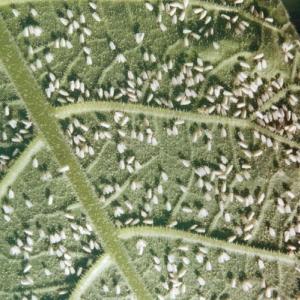
Of the pests, aphids and whiteflies are especially dangerous for tomato. Insects are very similar to each other, they look like a small white moth.
It is almost impossible to see them with the naked eye. They sit on leaves in flocks and eat the bush. Also, the culture is susceptible to the action of spider mites. The insect leaves its web on the stem and leaves, which causes a lack of nutrition.
To avoid fight insects and pests after their appearance, it is better to immediately carry out prevention. To do this, it is advised to periodically process the beds with a solution of wood ash or garlic water.
Spraying the bushes with whey or a solution based on tobacco leaves is also considered a good remedy against pests. Organic procedures are absolutely safe for both vegetables and humans.
The nuances of growing in open ground and in a greenhouse
When growing tomatoes outdoors, use a drip irrigation system. The advantages of the method are that water enters the beds gradually and does not cause sharp fluctuations in moisture in the soil. In addition, water does not stagnate on the surface of the earth, which means that the risk of fungal diseases and infections is reduced.
If the tomato is planted in a greenhouse, monitor the humidity and temperature levels. Greenhouses are stuffy and hot, so do not forget to ventilate the structure. Also, during preventive treatment of bushes from diseases, pay attention to walls and other hard surfaces. They can also contain germs.
Harvesting and application of the crop
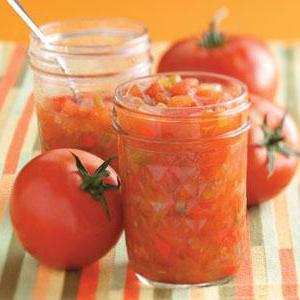 At the stage of maturity, vegetables should be harvested daily. Pick pink tomatoes as red ones speed up the maturation of the brush. It is better to pick tomatoes without stalks.
At the stage of maturity, vegetables should be harvested daily. Pick pink tomatoes as red ones speed up the maturation of the brush. It is better to pick tomatoes without stalks.
The Alexander the Great variety is used in cooking, folk medicine, and cosmetology. The vegetable is ideal for preparing salads, side dishes, cold appetizers.
In addition, a medicinal tincture is made on its basis. The drug helps to get rid of colds and strengthen immunity in the cold season.
Moreover, tomatoes are a natural antidepressant and should be eaten when a person is in a bad mood.
Advantages and disadvantages of the variety
Pros of the variety:
- juicy taste and rich aroma;
- large tomatoes;
- long shelf life;
- high immunity.
Negative sides:
- the best harvest will be in the greenhouse;
- picky about soil and fertilizing;
- not always suitable for whole canning.
Farmers reviews
Here is what gardeners say in their online reviews about the Alexander the Great variety.
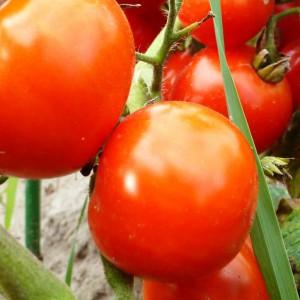
Elvira, Tyumen: “I planted 3 beds of Alexander the Great last year f1. The variety is very decent. The summer turned out to be cold, but the harvest was still successful. For growth, I used mainly organic fertilizers. Grown up in a greenhouse. "
Maria, Voronezh region: “In my opinion, the variety combines all the best - color and taste. Tomatoes set quickly, there were no problems with growing. The return was amicable. They ate it fresh, made tomato juice and preserved it for the winter. "
Tatyana. Kurgan region: “The variety was recommended to me for a long time, and finally I planted it. I expected more. Taste good, but had to look after a lot. In my opinion, this should not be typical for a hybrid. "
Conclusion
Many people like the “great” variety. The hybrid is not afraid of diseases, gives a stable tasty harvest. Plants need to be tied up and pinned, as well as fertilized and top dressing.
The variety is planted in a bright and well-lit place. Tomatoes are great for baby and diet food, and will also decorate any festive table.